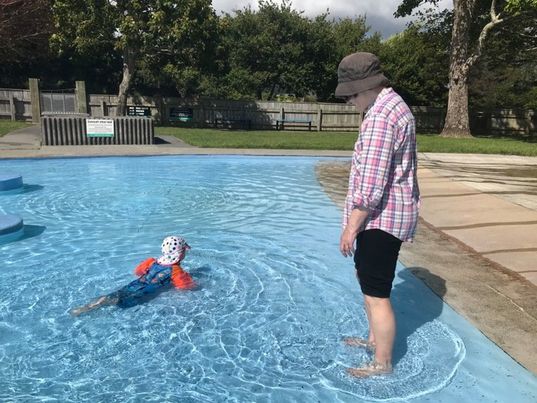
7. Teach Them Well
Parents you are your child's first teacher and role model when it comes to water safety. Teach your child water safety for safe play and fun at the pool, beach, river and lake.
Teach them well
 Water Safety New Zealand and Plunket encourage all parents and caregivers to introduce their children to water in a positive, caring manner. Sharing bath time and visiting your local pool are positive steps to developing water confidence and safety skills in your child.
Water Safety New Zealand and Plunket encourage all parents and caregivers to introduce their children to water in a positive, caring manner. Sharing bath time and visiting your local pool are positive steps to developing water confidence and safety skills in your child.
Adapt your water experiences for your child to suit their age and experience.
What age should I take my child to a public pool?
What should I teach my child from six months?
What do I do for the next age group?
What can I teach my toddler?
I’m not sure I can teach my child how to swim?
Swimming clothing
Swim nappies
Special swimming nappies don’t hold the water like traditional ones which become incredibly heavy when worn in water and can weigh your child down.
Swim nappies are designed to be tight around legs and absorb the mess without swelling and becoming water-logged, so your child can happily play unhindered.
Made with stretchy material they are comfortable for your child to wear and come with tabs that can easily let you change your child quickly when the water session ends.
Leading brands come in small (seven to 12kg); medium (11 to 15kgs) and large (14kg plus) sizes. They cost around $2.00 a pair and come in packs of 12 usually. They can be purchased individually from the supermarket or from your local pool.
Baby wetsuits
Even the warmest of pools can feel cold for young babies which has led many companies to produce baby wetsuits.
Made of light weight neoprene, some even come with a soft lining inside to protect sensitive skin. They can come in sizes 0 to three months, three to six months, six to 12 months and 12 to 24 months.
They come as a full body suit to just tops or leggings and are ideal to protect your child from UV rays as well.
They are also protective of sensitive skins and used over barrier or eczema creams to prevent them from rinsing off once in water.








